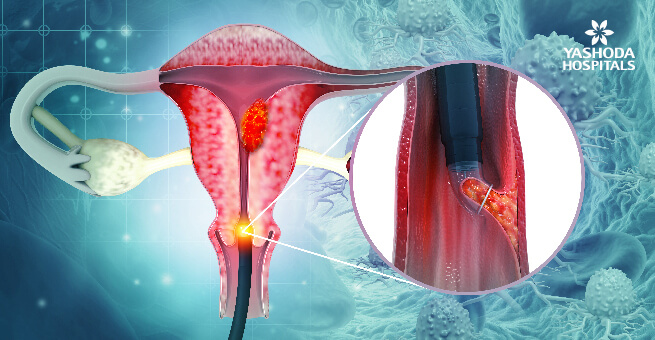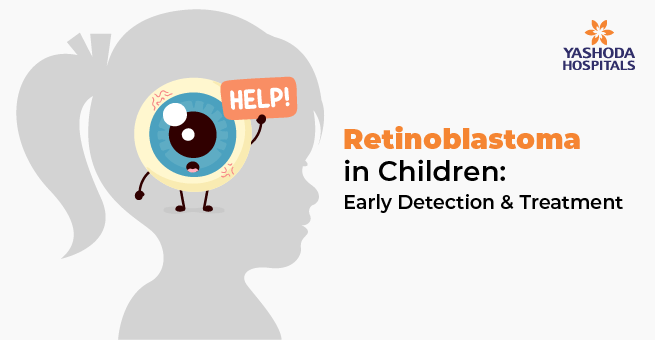Learn About the Causes, Symptoms, and Treatment of Cervical Cancer

Cervical cancer develops in the cervix, which is the lower part of the uterus that connects to the vaginal opening. Most cervical cancers are caused by various strains of the human papillomavirus (HPV), a sexually transmitted infection.
By having screening tests and receiving an HPV vaccine, you can lower your risk of developing cervical cancer.
This article outlines the causes, symptoms, diagnosis, and treatment options as well as preventive measures for cervical cancer.
What factors contribute to the development of cervical cancer?
The majority of cervical cancers are caused by the human papillomavirus (HPV), a virus that can be passed from one person to another during sexual contact.
There are many different types of HPV, and some of them can cause changes in a woman’s cervix that can eventually lead to cervical cancer, while others can cause genital or skin warts.

Other factors that can increase your chances of developing cervical cancer include
- Having multiple sexual partners
- Sexually transmitted diseases (STDs)
- Immunodeficiency diseases, such as AIDS
- Use of birth control pills for a long period of time (five years or more)
- Having given birth to three or more children
- Smoking
What symptoms and warning signs are associated with cervical cancer?
Early stages of cervical cancer are typically asymptomatic and difficult to detect. It may take several years for cervical cancer to show its first symptoms.
Signs and symptoms of more-advanced cervical cancer include:
- Vaginal bleeding following sexual intercourse
- Vaginal bleeding during periods or after menopause
- A heavier and/or longer-than-average menstrual period
- Watery, bloody, and foul-smelling vaginal discharge
- Pelvic pain or discomfort during intercourse
These symptoms, however, could be a sign of other conditions unrelated to cancer. Therefore, if you experience any of the symptoms listed above, it is advisable to consult a doctor.
How is cervical cancer diagnosed?
A thorough examination of your cervix is done if cervical cancer is suspected based on your symptoms.
A Pap smear test, also known as a Pap smear, is a test that takes cells from your cervix and analyses them for indications of precancers or other anomalies. If your Pap test results are abnormal, you will need to have additional testing. This could include an HPV test that assesses signs of an HPV infection that is often linked to cervical cancer.
A colposcopic test is used to check for abnormal cells. During the examination, a special magnifying instrument called a colposcope is used to take a sample of cervical cells for biopsy.
The tissue sample can be obtained either through-
- Punch biopsy, which involves taking tiny samples of cervical tissue with a sharp instrument, or
- Endocervical curettage, which involves taking a tissue sample from the cervix using a small spoon-shaped instrument, called a curet, or a thin brush.
If the colposcopy shows signs of invasive cancer, you might need another biopsy later either with-
- An electrified wire loop, that is used to perform a loop electrosurgical excision procedure to remove tissue from your cervix or
- A cone biopsy that enables to obtain deeper layers of cervical cells
These procedures help to get a better look at the types of unusual cells in your cervix and determine whether they have metastasized.
Have you been diagnosed with cervical cancer?
What is the process for staging cervical cancer?
If a biopsy reveals advanced cancer, additional tests will be performed to determine whether and how far the cancer has spread. They include:
- Blood tests
- Chest X-ray
- CT scan
- An intravenous pyelogram (IVP)
- Cystoscopy
- Proctosigmoidoscopy
- Lymph node scans using CT, MRI, or PET
- Visual examination of your rectum and bladder
These tests are used to “stage” the cancer based on how large the lesions are and the extent of their spread. Cervical cancer stages range from 0 (the least severe) to IV (metastatic disease, the most severe). The stage of your cancer will play a significant role in determining your course of treatment.
How is cervical cancer treated?
Depending on the stage of cervical cancer, it can be treated in a variety of ways. Treatment options include surgery, radiation therapy, and chemotherapy.
Surgery
If cervical cancer is detected early, surgical removal of the tumour is often the primary treatment. The type of surgery, however, is dependent on the individual patient factors and can be performed for both early and late-stage cervical cancers.
Surgery for Cervical Cancer in the Early Stage:
- Cryosurgery: It involves the freezing of tumour cells.
- Laser Surgery: During this procedure, a laser beam heats and destroys the cancerous cells.
- Conization: This procedure involves removing a cone-shaped piece of tissue from the cervix in order to assess whether additional treatment is required.
Surgery for Cervical Cancer in the Advanced Stage:
- Radical Trachelectomy: Trachelectomy, also known as cervicectomy, is the surgical removal of the cervix. Unlike hysterectomy, women who undergo this procedure may be able to have children but face a higher risk of premature birth or miscarriage.
- Radical Hysterectomy: A hysterectomy is a surgical procedure that involves removing the uterus and cervix pelvic lymph nodes. It can be performed via open surgery, the laparoscopic method, or with robotic assistance.
- Pelvic Exenteration: This surgery is used to treat cancer that has spread to nearby organs.
Radiation Therapy
High-energy radiation, such as x-rays or other types of radiation, is used in radiation therapy to either kill or stop the growth of cancer cells. It is often used in combination with surgery.
There are two types of radiation therapy, namely, external beam therapy and internal radiation therapy (brachytherapy).
- External Beam Radiotherapy (EBRT): EBRT delivers high-energy photon beams externally to the affected part of the body. It specifically targets the cancer cells while sparing surrounding normal tissues.
EBRT treatments can include IGRT (Image Guided Radiotherapy), VMAT (Volumetric Arc Therapy), IMRT (Intensity Modulated Radiotherapy), and 2DRT (2 Dimensional Radiotherapy), among others.
- Internal radiation therapy: Also known as brachytherapy, it involves delivering radioactive material either temporarily inside the patient using a delivery device. Compared to ERBT, it enables your doctor to treat a smaller area with a higher total dose of radiation in less time.
Chemotherapy:
Chemotherapy is the administration of drugs intravenously or orally in order to kill or prevent cancer cells from growing. It is typically used in conjunction with radiation therapy to reduce the likelihood of a relapse. Patients typically receive chemotherapy over a set period of time, with breaks in between to alleviate potential side effects.
Palliative Care
Cancer treatments can have severe side effects that are mentally, physically, and emotionally draining. Palliative care, which focuses on improving how you feel during treatment by managing all of these side effects, is an important part of your care that is frequently included in addition to standard cancer treatments.
Anyone can receive this kind of care, regardless of age or cancer type and stage, and it often works best when it is initiated as soon as a cancer diagnosis is made. People who receive palliative care in addition to cancer treatment frequently experience fewer severe symptoms, a higher quality of life, and higher levels of treatment satisfaction.
There are many different types of palliative care, and these care options frequently include medication, dietary adjustments, relaxation exercises, emotional and spiritual support, and other therapies.
Hence, before beginning treatment, discuss with your doctor the goals of each treatment, the potential side effects, and palliative care options
References:
- Cervical Cancer
https://www.cdc.gov/cancer/cervical/basic_info/risk_factors.htm - Cervical cancer
https://www.mayoclinic.org/diseases-conditions/cervical-cancer/symptoms-causes/syc-20352501 - Cervical Cancer
https://my.clevelandclinic.org/health/diseases/12216-cervical-cancer - Treating Cervical Cancer
https://www.cancer.org/cancer/cervical-cancer/treating.html - Surgical Procedures for Cervical Cancer
https://www.winchesterhospital.org/health-library/article?id=19234 - Cervical Cancer Treatment
https://www.radiologyinfo.org/en/info/cervical-cancer-therapy
About Author –
Dr. Mohammed Abdul Azeem, Radiation Oncologist,Yashoda Hospitals, Hyderabad




















